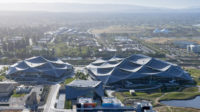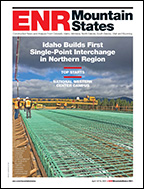Once built, BCA will develop the program to test building systems and components in tropical climactic conditions, via a configurable test setup that can be oriented to different sun angles. “Flexlab is new and fundamentally different, so they have to develop their own business model for what services they are going to offer to the Singapore community and how they will manage them,” says Stephen Selkowitz, senior advisor on building science at LBNL.
Researchers involved in the GBIC initiative see Flexlab as a key player in fostering new technologies. “It’s important for us to have facilities like this where we can now take our industry partners through a testing phase, more specifically in an integrated way,” says Nilesh Jadhav, program director with the energy research institute at NTU. Rather than just testing one isolated technology, the new facility will allow testing of multiple components in various configurations. “That’s where Flexlab can add a lot of value,” he says.
Removing the Safety Net
While there’s currently no shortage of governmental incentives for improving energy efficiency in Singapore, officials warn not to expect the handouts to continue forever. “We look at incentives as a temporary measure,” Keung says. “We strongly believe that green building creates value and has a strong business case, because the payback period can be quite short.” And, if the design is done correctly from day one, it can even be cost neutral, he adds.
For other countries just starting down the green building path, it would behoove them to borrow a page from Singapore’s playbook, experts say.
"The best way to overcome the initial inertia is for government to lead,” says Jane Henley, CEO of the World Green Building Council, which has been working throughout the Asia-Pacific region to bring local green building councils and their government counterparts together in policy partnerships. “There needs to be some base policy that will bring up the lack of investment in quality buildings,” she says.




Post a comment to this article
Report Abusive Comment